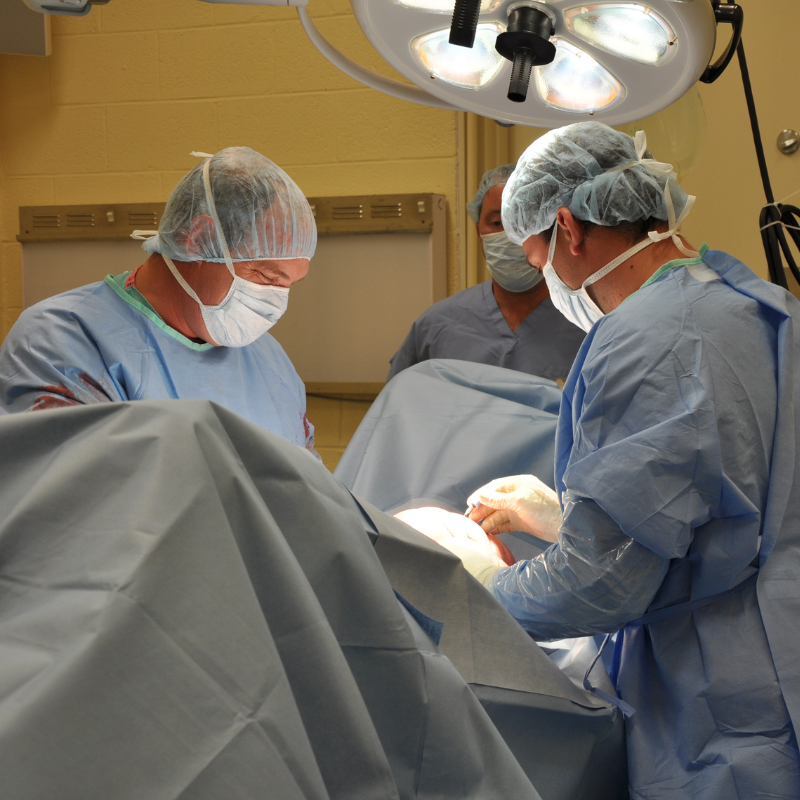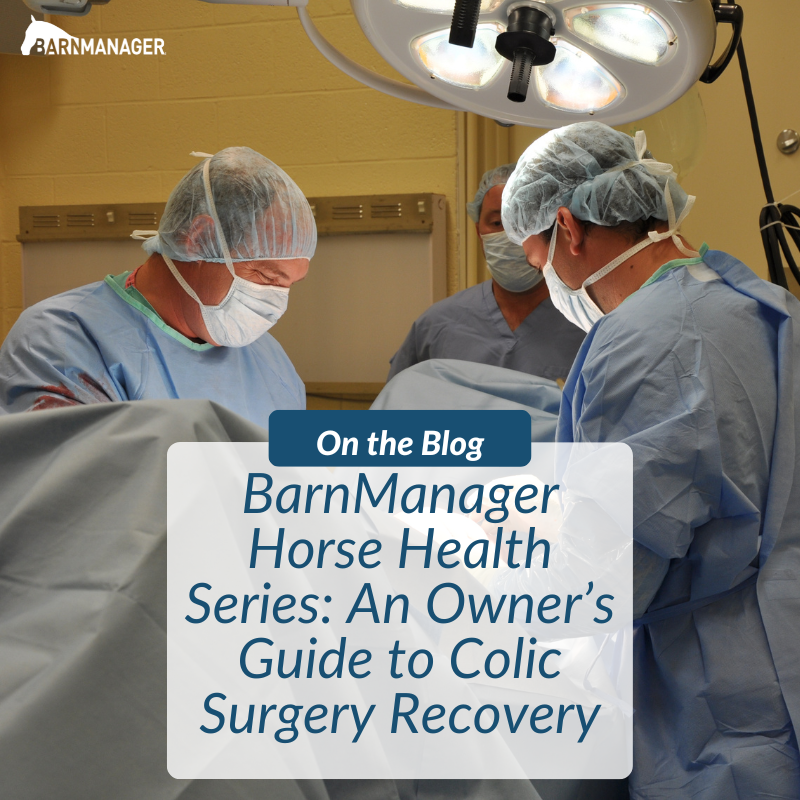Every owner dreads having to decide whether or not to send their horse onto the surgical table for colic surgery. Before that difficult moment occurs, it is important that the horse’s owner or caretaker understands what to expect throughout the recovery process. Keep reading to find out what you need to know about colic surgery recovery from board-certified equine surgeon Dr. Weston Davis of Palm Beach Equine Clinic in Wellington, FL.
Stages After Surgery
Immediately Post-Surgery
As soon as a horse is up and returns to its stall at the veterinary clinic where the surgery was performed, careful monitoring begins, including physical health evaluations, bloodwork, and often, advanced imaging. Physical exams will be conducted at least four times per day to evaluate the incision and check for any signs of fever, laminitis, lethargy, and to ensure good hydration status. An abdominal ultrasound may be done several times per day to check the health of the gut, and a tube may be passed into the stomach to check for reflux and accumulating fluid.
Before the horse can be discharged, it must be regularly passing manure and back on a semi-normal diet.
Returning Home
Veterinarians often recommend the use of an elastic belly band to support the horse’s incision site during transport from the clinic and while recovering at home. Different types of belly bands offer varying levels of support. Some simply provide skin protection, while others are able to support the healing of the abdominal wall.
Two Weeks Post-Surgery

Photo by Jump Media
At the 12-to-14-day benchmark, the sutures will be removed from the horse’s incision site. The incision site is continuously checked for signs of swelling, small hernias, and infection.
At-Home Recovery
When the horse is home, the priority is to continue monitoring the incision and return them to a normal diet if that has not already been accomplished.
The first two weeks of recovery after the horse has returned home is spent on stall rest with free-choice water and hand grazing. After this period, the horse can spend a month being turned out in a small paddock or kept in a turn-out stall. They normally return to full turnout during the third month. Hand-walking and grazing is permittable during all stages of the at-home recovery process. After the horse has been home for three months, the horse is likely to be approved for riding.
Generally, when a horse reaches the six-month mark in their recovery, the risk of adverse internal complications is very low, and the horse can return to full training under saddle.
When to Call the Vet?
After colic surgery horses should be monitored closely throughout all stages of recovery for signs of unusual behavior. Decreased water intake, abnormal manure output, fever, pain, or discomfort are all signals that a veterinarian should be consulted immediately.
Long-Term Care
In most cases of colic surgery, patients that properly progress in the first two weeks after the procedure will go on to make a full recovery and successfully return to their previous level of training and competition.
Depending on the specifics of the colic, however, some considerations need to be made for long-term care. For example, if the horse had sand colic, the owner would be counseled to avoid sand and offer the horse a selenium supplement to prevent a possible relapse. In large intestinal colic cases, dietary restrictions may be recommended as a prophylactic measure. Also, horses that crib can be predisposed to epiploic foramen entrapment, which is when the bowel becomes stuck in a defect in the abdomen. This could result in another colic incident, so cribbing prevention is key.
Generally, a horse that has fully recovered from colic surgery is no less healthy than it was before the colic episode. While no one wants their horse to go through colic surgery, owners and caretakers should understand the recovery process to help ensure the horse successfully returns to health.
NOTE: These guidelines are only suggestions, and you should always follow the specific instructions from your veterinarian.
Have questions about utilizing BarnManager or want to give it a try for yourself? Request a live demo here!

